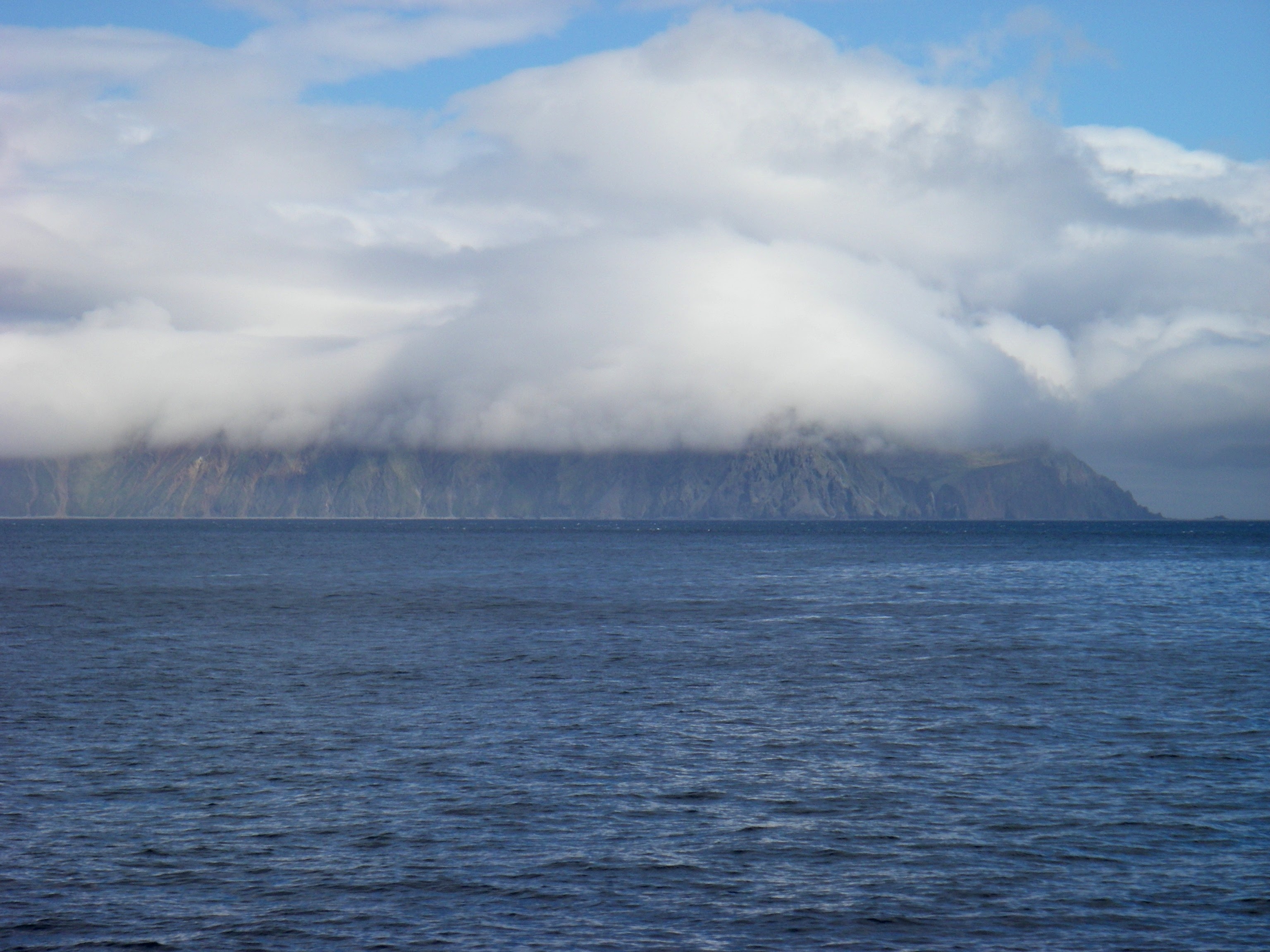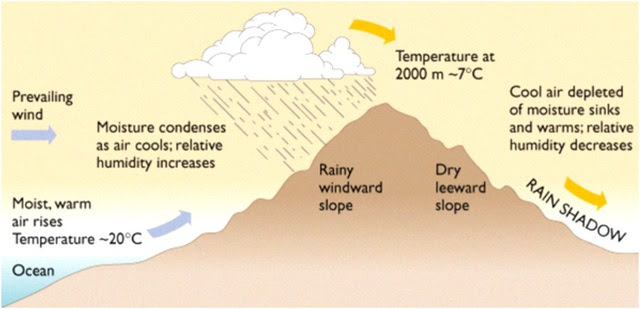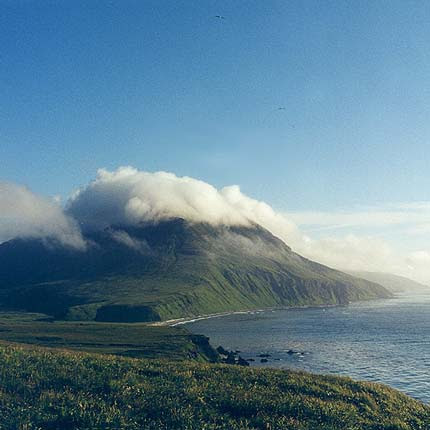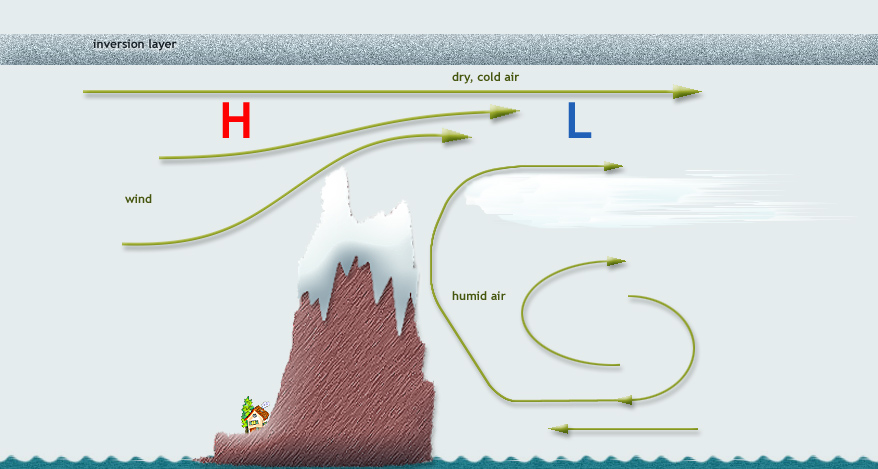An Example of Orographic Clouds Would Be
They are always white in colour. The wind carries this cloud down along the leeward slope where it dissipates through adiabatic heating.

6e Orographic Lift Lee Shadowing
Orographic influence on the windward side.

. Additional to these main types there are a few other types of cloud including noctilucent polar stratospheric and orographic clouds. Clouds and precipitation cover a wide bond and extend some distance behind slow-moving cold fronts. They are thin and detached clouds having a feathery appearance.
Orographic lift in the Southeast occurs mainly along the Appalachian Mountains. Orographic lifting is not the whole story. Wet adiabatic lapse rate.
Since the air has nowhere to. MOISTURE INSTABILITY and LIFTINGAdditionally there is a fourth ingredient WIND SHEAR for severe thunderstorms and each are covered separately and in-depth farther downAs a general rule the surface dewpoint needs to be 55 degrees. On the windward side.
It provides the definitions and descriptions of cloud types and meteors and flow charts to help identify them. Orographic influences on clouds. These are clouds that extend from the lower to the higher altitude s of the atmosphere.
The WMO International Cloud Atlas is the reference for the classification of clouds and meteorological meteors. The text enclosed in grey-shaded boxes like this example comprises Annex I to the Technical Regulations WMO-No. Coverage in the upper elevations sits at 80-110 on the ground 60-70 along the south end of the PC ridge but take caution that the late March warm-up burned many southerly aspects to dirtTraumatic injury is possible with the thinly veiled stumps.
Precipitation is a major component of the water cycle and is responsible for depositing most of the fresh water on the planetApproximately 505000 km 3 121000 mi 3 of water falls as precipitation each year 398000 km 3 95000 cu mi of it over the oceans. Meteorologists call this contrast the orographic effect. As a result humidity increases and orographic clouds and precipitation can develop.
Skiing and riding conditions were excellent yesterday morning although greenhousing took its toll by the afternoon. As mentioned above the Mauna Kea summit has the lowest annual total in the islands. Wave clouds do not move downwind as clouds usually do but remain fixed in position relative to the obstruction that.
If the air mass has a high moisture content clouds of very distinctive appearance will develop. The table below lists the standard classifications used by the UK Met Office and gives example images of each along with brief descriptions. They form by thermal convection or frontal lifting sustained by the powerful convectional current that holds and pushes the moisture in the clouds further upward.
When air moves across the Ohio and Tennessee valleys it encounters the Appalachian Mountains. Cumulus clouds look like cotton wool. Orographic lift causes a cloud to form along the top of the ridge.
A few examples of some of these are given at the bottom of the table below. When the air descends the leeward side it warms and is drier because the moisture in the air was wrung out during the ascent. As the air moves to the other side of the island it warms up and dries out.
Clouds forming on the windward slope of a mountain. An example of orographic clouds would be. 49 and has the legal status of standard practices and procedures.
Dry adiabatic lapse rate. Thus an islands windward side is wetter and more verdant than its drier leeward side. For example on high mountains such as Haleakalā Mauna Kea and Mauna Loa the maximum rainfall zones are found at the mid-slopes above which rainfall declines steeply.
When the environmental lapse rate decreases more rapidly with height than the dry adiabatic rate the atmosphere is. They are generally formed at a height of 4000 -7000 m. Orographic influence on the leeward side.
Once the damp air makes landfall on an island it ascends hills and mountains to form condensation clouds and precipitation. Both lee waves and the rotor may be indicated by specific wave cloud formations if there is sufficient moisture in the atmosphere and sufficient vertical displacement to cool the air to the dew pointWaves may also form in dry air without cloud markers. As parcel rises H 2 O condenses and gives off heat and warms air around it.
Cirrus clouds are formed at high altitudes 8000 12000m. In Idaho meanwhile the SNOWIE project the name of which stands for Seeded and Natural Orographic Wintertime Clouds is attempting to boost snowfall in the region by sending smoke filled. They exist in patches and can be seen scattered here and there.
An example of a vertical cloud is the Cumulonimbus cloud. Given the Earths surface area that means the globally averaged annual precipitation is 990 millimetres 39 in. If the warm air is moist and stable stratus-type clouds and steady rain occur If the warm air is conditionally unstable showers and thunderstorms are likely.
Assumes a dry parcel of airAir cools 3C100 m rise in altitude 54F1000 ft. There are three ingredients that must be present for a thunderstorm to occur. For example plant life varies significantly.
Change of temperature with a change in altitude of an air parcel without gaining or losing any heat to the environment surrounding the parcel. This area with a lack of moisture is known as a rain shadow.

6e Orographic Lift Lee Shadowing


0 Response to "An Example of Orographic Clouds Would Be"
Post a Comment